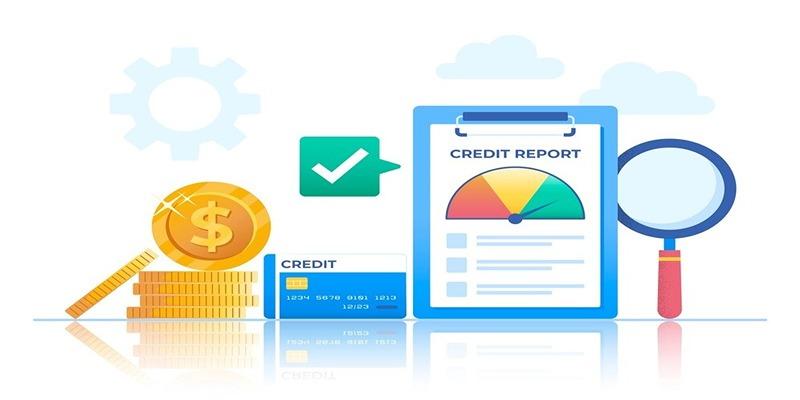A secured credit card is a helpful financial tool for individuals looking to build or repair their credit history. Unlike traditional credit cards, a secured card requires a cash deposit that serves as collateral and often determines the card's credit limit. This introductory deposit is crucial as it minimizes risk for the issuer and gives consumers the opportunity to demonstrate their creditworthiness through responsible use. In this guide, we'll explore the ins and outs of secured credit card deposits, how they work, and why they can be a stepping stone to improved financial health.
The Basics of Secured Credit Cards
The initial deposit for a secured credit card typically ranges from $200 to $2,500, depending on the institution and the credit product offered. This deposit is not used to pay off the balance; instead, it is held in a secured account by the issuer. If the cardholder defaults on payment, the issuer may use the deposit to cover outstanding debts, which means less risk for the lender but highlights the importance of managing the card responsibly.
Secured credit cards function like traditional credit cards: you make purchases up to your credit limit, receive a monthly statement, and are required to make at least the minimum payment by the due date. Timely payments are reported to credit bureaus, contributing positively to your credit history, whereas late or missed payments can result in negative reporting. It is critical for users to understand that the benefits of a secured card are directly tied to disciplined financial behavior.
Some secured credit cards offer a pathway to "graduate" to an unsecured card after a period of consistent, responsible use. This typically means using the card regularly, paying bills on time, and maintaining a low balance relative to the credit limit. In such cases, the deposit is often refundable, either applied against the card balance or returned to the cardholder, provided there is no outstanding debt on the account.
How Secured Credit Card Deposits Work?
A secured credit card deposit is an essential aspect of the card's function. When a user applies for a secured card, they are required to make an initial deposit as collateral. The amount of this deposit is usually equivalent to the desired credit limit but can also be determined by the issuer based on factors such as credit score and income.
Once the deposit is made, it is held in a secure account by the issuer and acts as collateral for any potential debt. This reduces the risk for the lender, making it easier to approve applications from individuals with poor or limited credit history. The deposit also serves as an indicator of financial responsibility, as users who are unable to make the deposit may not be ready to handle a credit card responsibly.
Benefits of Using a Secured Credit Card
Secured credit cards are more than just tools for credit improvement; they harbor the potential to teach valuable money management skills.
1. Rebuilding Credit History
Secured credit cards are particularly effective for individuals with tarnished credit or those who are new to credit. With each purchase and timely payment, cardholders send positive signals to credit bureaus. Over time, these responsible habits can translate into an improved credit score. The security deposit acts as a safety net, ensuring that lenders remain protected, which makes them more willing to extend credit. As cardholders continue to demonstrate financial accountability, they enhance their credit profile, which is essential for future loan approvals, competitive interest rates, and more favorable credit terms.
2. Encouraging Financial Discipline
One of the hidden virtues of a secured credit card is its inherent structure that encourages better budgeting and spending habits. Because the credit limit often matches the deposit, users are less likely to overextend financially. This spending cap prompts cardholders to prioritize expenses, adhere to a budget, and avoid the high-utilization pitfalls that negatively impact credit scores. More importantly, regular monitoring of balances and mindful spending can evolve into lifelong financial discipline. As such, secured credit cards not only pave the way for credit recovery but also embed essential budgetary principles.
3. Graduation to Unsecured Cards
For many, the goal of using a secured credit card is to qualify for an unsecured card with no deposit requirements. This graduation is a testament to a cardholder's reliability and monetary governance. Secured card issuers often review accounts periodically to assess eligibility for an upgrade. Meeting the criteria typically involves a history of on-time payments, low balance maintenance, and sometimes even an improved credit score. Successfully moving to an unsecured card is a significant step forward in one's financial journey. It marks the transition from a consumer needing to prove creditworthiness to one who is trusted with unsecured revolving credit. This progression is a tangible result of financial responsibility.
4. Building Emergency Funds
The required deposit for a secured credit card can serve as an emergency fund in times of financial need. The deposit is often refundable, making it accessible in case of emergencies and unforeseen expenses. This added layer of financial security provides peace of mind and can be particularly helpful for individuals who may not have access to traditional savings accounts.
Risks and Considerations
While secured credit cards can be a valuable tool for financial growth, they also come with risks and considerations that users should be aware of.
1. Non-refundable Deposits
Some secured credit card issuers may not refund the initial deposit at all, even after graduation to an unsecured card. This means that the deposit is essentially a fee paid for using the card and not a savings account. It is important to carefully research and compare secured credit cards to ensure that the deposit terms align with individual financial goals.
2. Higher Fees
Secured credit cards may come with higher fees than traditional unsecured cards, such as annual fees, application fees, or additional charges for increasing the credit limit. These added costs should be considered when comparing different secured card options.
3. Increased Responsibility
While using a secured credit card can lead to improved credit and graduation to an unsecured card, it also requires a higher level of responsibility. Late or missed payments can still result in negative reporting and damage to credit scores. Users must be disciplined in their financial habits to reap the benefits of a secured credit card.
Conclusion
Secured credit cards serve as a valuable financial tool for individuals looking to improve their credit and develop responsible money management skills. By understanding how secured credit card deposits work and the potential benefits and risks, users can make informed decisions about which card is right for them. With proper usage, secured credit cards can pave the way towards a brighter financial future.











